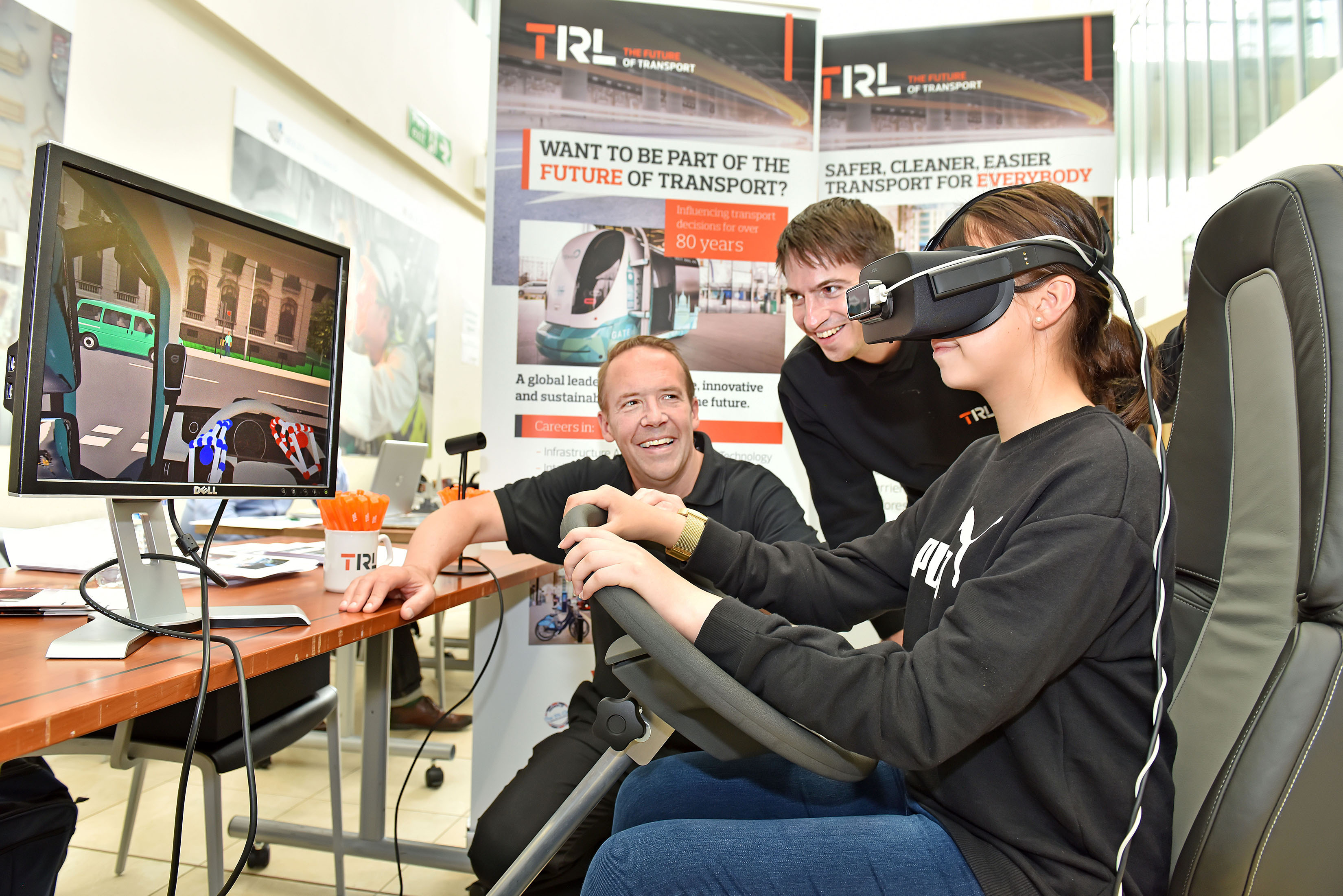 The global centre of innovation in transport and mobility, TRL, has developed a unique blind spot simulator rig which utilises virtual reality to help improve the design of truck cabs and road layouts, as well as aiding accident investigations.
The global centre of innovation in transport and mobility, TRL, has developed a unique blind spot simulator rig which utilises virtual reality to help improve the design of truck cabs and road layouts, as well as aiding accident investigations.
The precision of the system is based on a physical rig developed and calibrated by TRL in collaboration with Volvo, to ensure a highly accurate representation of direct vision from a real-life Volvo vehicle cab.
The calibrated rig allows all combinations of seat and steering wheel adjustments available in a real-life vehicle to be accurately replicated for each driver. The virtual reality experience is then reconfigured for each driver to reflect their unique physical dimensions and their individual seating positions. The resulting VR experience is an accurate replication of the view they would see when driving, as if they were in the actual vehicle.
Ceki Erginbas, Senior Researcher at TRL said, “VR technology is increasingly being used throughout the industry to create immersive visual experiences. However, immersion or high-quality computer graphics does not necessarily mean accuracy. We wanted to take VR technology one step further than just a visually appealing experience, and create a scientific tool for virtual testing.”
“With this calibrated system, we can accurately test new vehicles or road environment designs, without the need to physically build them. We can also accurately recreate traffic accidents, from the viewpoint of different people located at the scene. By offering this unique virtual testing system, not only are we aiming to improve safety for vulnerable road users, but also to help reduce costs for designers, contractors and manufacturers, as they can detect vision problems early in the design stage; saving them from high reconstruction costs.”
Photo: The TRL blind spot simulator rig.